Making an eco-friendly splash: Edmonton park employs recirculation system in water design
by Samantha Ashenhurst | January 29, 2019 12:52 pm
By Peter Arnold
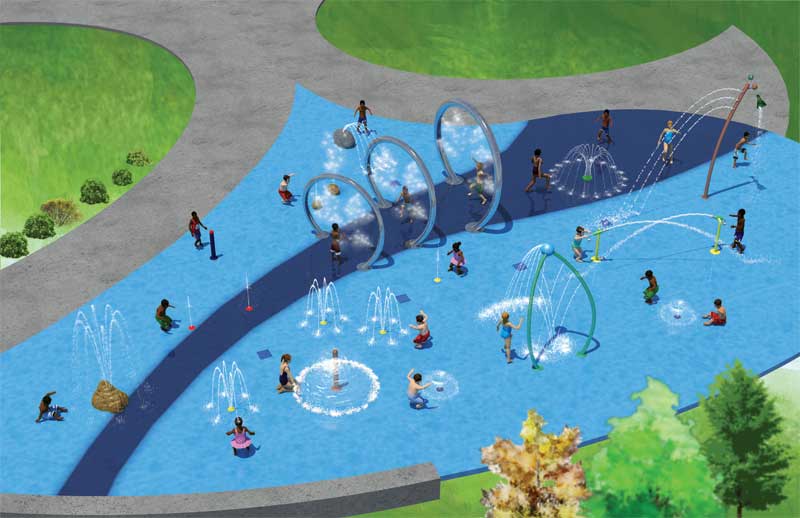 [1]
[1]In late-September 2018, the River Valley area in Edmonton saw the completion of a remarkable aquatic facility in Stillwater, a new residential development. Created by Mattamy Homes, the fully master-planned community embraces its surrounding nature, bringing the beauty of its landscape to life by including parks, trails, and green areas alongside an all-encompassing amenity centre, designed to promote a healthy and active lifestyle.
Among the amenities offered is an eye-catching splash pad that is unique in many ways. In addition to its individualistic design, which includes a custom-made set of spray rings, the all-inclusive facility employs an eco-friendly recirculation system to conserve water.
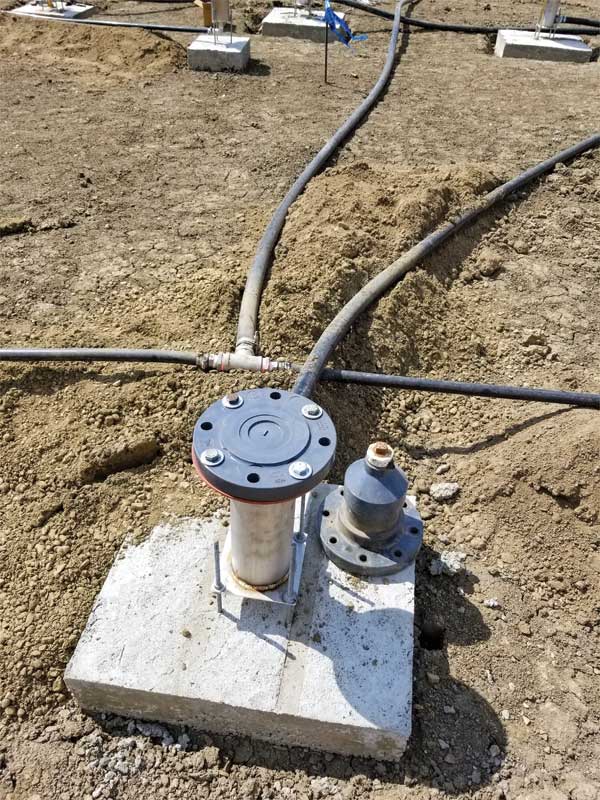 [2]
[2]The splash park was designed and built by Park N Play Design, an Alberta-based supplier of indoor and outdoor custom play spaces. The company partnered Mattamy Homes and Rainman Irrigation using Water Odyssey aquatic play equipment by Fountain People. Shelly Robinson, territory manager at Park N Play, led the project from beginning to end.
“It was very exciting to be a part of this new development,” said Robinson. “We were able to create a design that is not only inclusive, but is also eco-friendly and visually stunning.”
Prioritizing inclusive play
Stillwater splash pad’s overall design focuses on accessibility. The installation includes water and spray features, usable by all age groups, which are designed to foster inclusive play. All surfaces are accessible via a stroller, wheelchair, or walker. The design invites users with varying levels of sensory, auditory, behavioural, and/or physical challenges to play alongside others or by themselves.
With inclusive play, it is important to understand there are various ‘zones’ within the splash pad to be enjoyed safely by users of any age for independent and interactive play. As such, there are areas where participants can be soaked, others where they can be splashed, and zones with cannon shooters for those with high energy (e.g. teenagers). Additionally, there are areas along the edge of the splash pad for people who prefer to play alone.
To integrate the surrounding nature, the design includes a custom ‘rock’ spray feature for participants to sit or crawl on. The installation also includes several smaller artificial ‘stones’ that emit a light mist.
In addition to the various interactive spray features, Park N Play Design worked with the developer to create a set of highly visible spray rings. This aspect of the installation is large enough to be seen year-round—whether the ground is covered with several feet of snow or when the splash pad is open with running water.
“When potential homebuyers approached the amenity centre this past September, they were greeted by the large and striking rings,” said Robinson. “Not only are these rings beautiful, but they are also central to the inclusive park design.”
Eco-friendly design
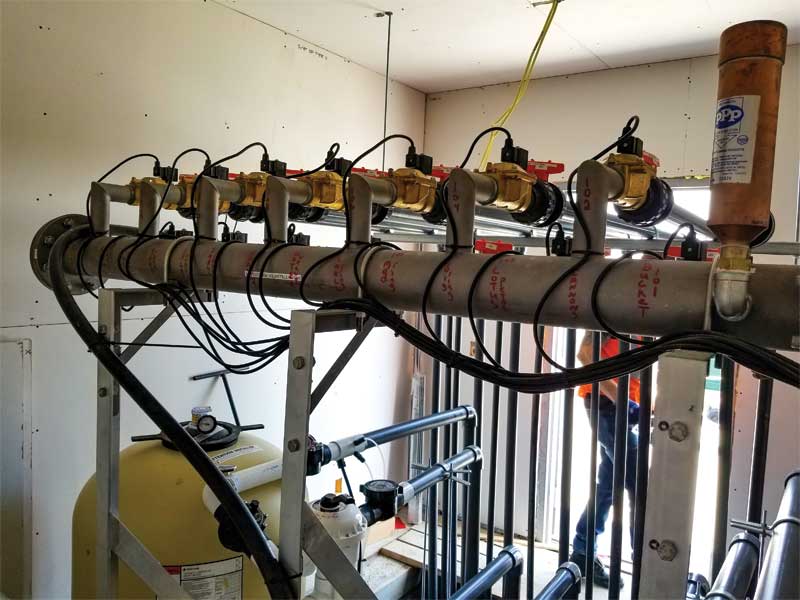 [3]
[3]Water is a finite resource and builders across North America are focused on conserving it, especially in regards to pools, fountains, and splash pads.
However, while incorporating a splash pad recirculation system is an eco-friendly way to conserve water, these systems are expensive, costing developers as much as $150,000 for mechanics and installation, and often require additional specifications to be approved by local health agencies. The Stillwater splash pad design, which provides 333 m2 (3586 sf) of wet play area and recirculates water at a rate of 857 litres per minute (lpm) (226.5 gallons per minute [gpm]), took more than two years to be engineered in compliance with local codes, as the system needed to be approved by the municipality and the health board.
In the past, many cities opted for flow-through (i.e. single-pass or drain-to-waste) systems when building public water elements, partly because the upfront costs for these installations are lower than those of a recirculating system. However, with the heightened awareness of water conservation, more and more municipalities are converting to recirculating systems as a way to use less water. As an added bonus, these systems have higher flow rates—meaning participants get wetter; however, these parks are required to be staffed during operating hours, which adds to costs.
Splash pads with recirculating systems are comparable to pools; they are equipped with chemicals, filters, and pumps. The water is sent to the pad from a tank roughly four to five times the system’s flow rate. For example, if the features are operating at a high flow rate of 9463 lpm (2500 gpm), a 37,854-L (10,000-gal) tank is required to allow the system to properly maintain water quality.
In addition to the pumps, filters, chemical feed, and sanitation elements needed to treat the water, recirculation systems include:
- a main drain with dual-port to collect all water and send it to the tank and/or waste;
- an electrical solenoid valve to divert rain water to waste with drain line to take waste water to the sewer system; and
- an underground water reservoir tank prefabricated and pre-plumbed with water-level control, floating skimmer, and submersible pump out system.
The installation also requires a lockable utility cover with ladder access to provide easy entry for maintenance of the water reservoir tank.
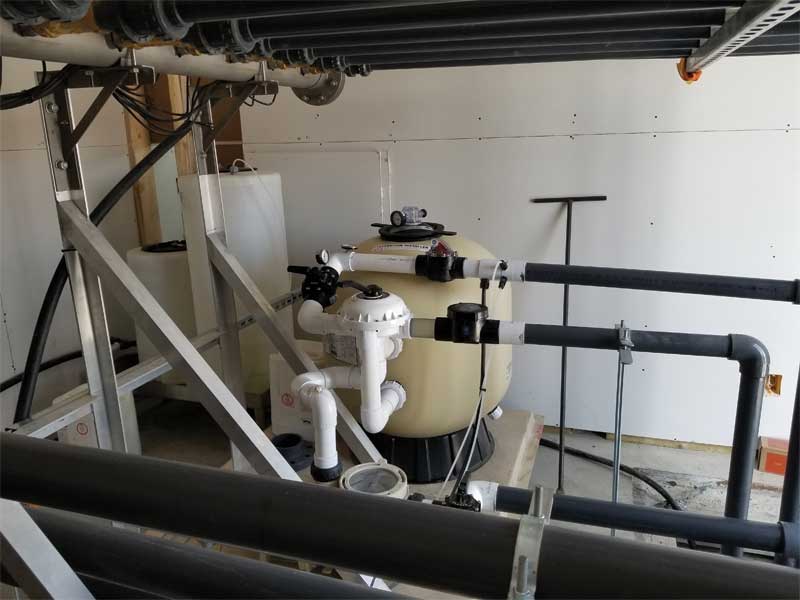 [4]
[4]In Canada, recirculation systems are installed below-grade to prevent issues resulting from frost or freezing; however, it is still vital these systems be winterized by the beginning of October.
It is also important aquatic designers and builders remember local codes and requirements are constantly evolving.
“The Stillwater Homeowners Association (SHA) splash pad is the first standalone spray park within the city proper of Edmonton that employs a water recirculation system, while there are several recirculating spray parks in the outlying areas of Edmonton,” says Kevin Jeroncic, an aquatic program specialist and public health inspector with Alberta Health Services (AHS). “It’s important for aquatic designers and builders to realize local codes and requirements are constantly evolving. Many designers and builders are aware the provincial government updated the Alberta pool regulation in 2014, but not everyone realizes the pool standards were updated again in 2018 and incorporated some of the Model Aquatic Health Code (MAHC) recommendations. Aquatic professionals should take the time to review the nuances from province to province to fully comply with local codes when designing and building recirculation systems for spray parks.”
Visual appeal
In addition to the splash pad’s various interactive spray features, Park N Play Design worked closely with the developer to create a visually appealing set of water rings. Positioned together in the centre of the park, the rings double as a public art installation.
“The developer asked us to include something with a real visual impact on the splash pad,” said Robinson. “We worked with Water Odyssey to create the large custom water coil spray rings, which are visible from all angles of approach.”
The three rings, positioned in a line, gradually increase in size. The smallest ring, which is 4.3 m (14 ft) tall, has a water coil measuring at 101.6 mm (4 in.) in diameter that runs 49 lpm (13 gpm) of water at 68.9 kPa (10 psi). The second ring, which is 4.9 m (16 ft) tall, has a 152.4-mm (6-in.) coil that runs 56.8 lpm (15 gpm) of water, also at 68.9 kPa (10 psi). Finally, the largest ring is 4.9 m (16 ft) tall with a 101.6-mm (4-in.) coil that runs 79.5 lpm (21 gpm) of water at
68.9 kPa (10 psi).
“We positioned the three coils together to create a real ‘wow’ factor upon approaching the splash pad,” said Robinson.
Additional opportunities
In Canada, where most outdoor splash parks are fully operational only three or four months per year, it is important to remember these spaces can serve as more than just water play areas. By employing strategies to enhance artistic visual appeal, such as lighting, a splash park can give a facility year-round appeal.
“Some of our clients change the lighting of their splash pads several times a year, utilizing colours like red and green around the winter holidays,” said Robinson. “We enjoy working with those who think outside the box and create custom water features and lighting elements to create year-round appeal.”
Building better parks
Stillwater’s splash pad serves as a great example of how these installations can fulfil the needs of a community. While splash parks are, by nature, an inclusive amenity during the summer months, there are additional design elements that can be incorporated to ensure the structure is also a highly visible landmark throughout the winter. Additionally, the inclusion of recirculation can help conserve water more efficiently than previously employed flow-through systems, which aligns with the mentality of most communities across Canada. Finally, splash parks make a visual statement, as they can serve as permanent, esthetically pleasing marketing tools.
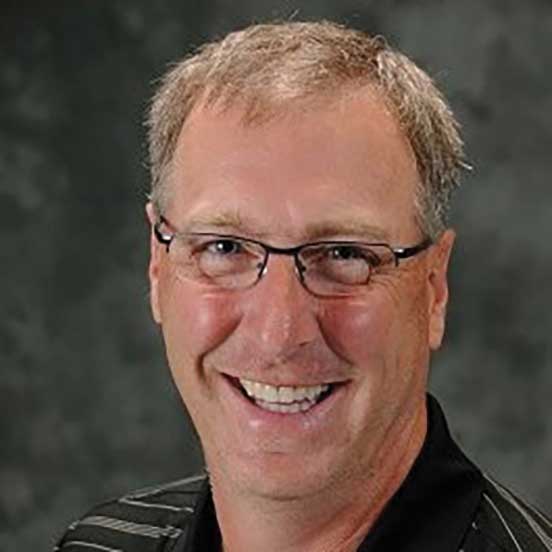 [5]Peter Arnold is the West Coast sales manager for Fountain People/Water Odyssey. He began his career in the aquatics industry as an aquatics director with the YMCA, where he worked for 12 years. Arnold is a certified aquatic facility operator (AFO) instructor with the National Recreation and Park Association (NRPA) and is the author of a training series for new pool operators called Pool Schools. He can be reached via e-mail at peter.arnold@fountainpeople.com[6].
[5]Peter Arnold is the West Coast sales manager for Fountain People/Water Odyssey. He began his career in the aquatics industry as an aquatics director with the YMCA, where he worked for 12 years. Arnold is a certified aquatic facility operator (AFO) instructor with the National Recreation and Park Association (NRPA) and is the author of a training series for new pool operators called Pool Schools. He can be reached via e-mail at peter.arnold@fountainpeople.com[6].
- [Image]: https://www.poolspamarketing.com/wp-content/uploads/2019/01/Concept.jpg
- [Image]: https://www.poolspamarketing.com/wp-content/uploads/2019/01/20180731_144549.jpg
- [Image]: https://www.poolspamarketing.com/wp-content/uploads/2019/01/20180905_134449.jpg
- [Image]: https://www.poolspamarketing.com/wp-content/uploads/2019/01/20180905_134628.jpg
- [Image]: https://www.poolspamarketing.com/wp-content/uploads/2019/01/Arnold_Headshot.jpg
- peter.arnold@fountainpeople.com: mailto:peter.arnold@fountainpeople.com
Source URL: https://www.poolspamarketing.com/trade/features/making-an-eco-friendly-splash-edmonton-park-employs-recirculation-system-in-water-design/